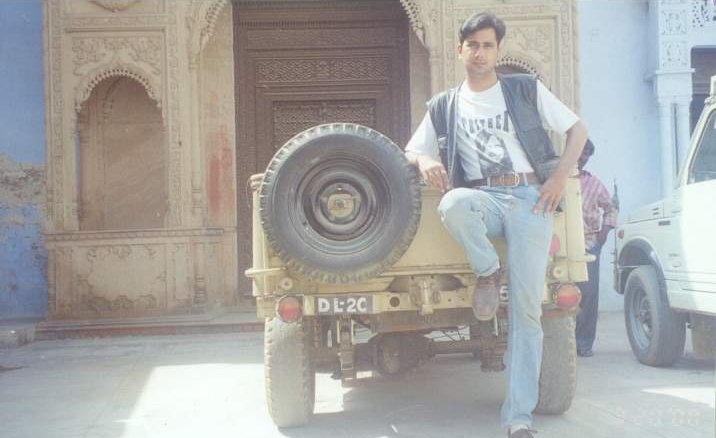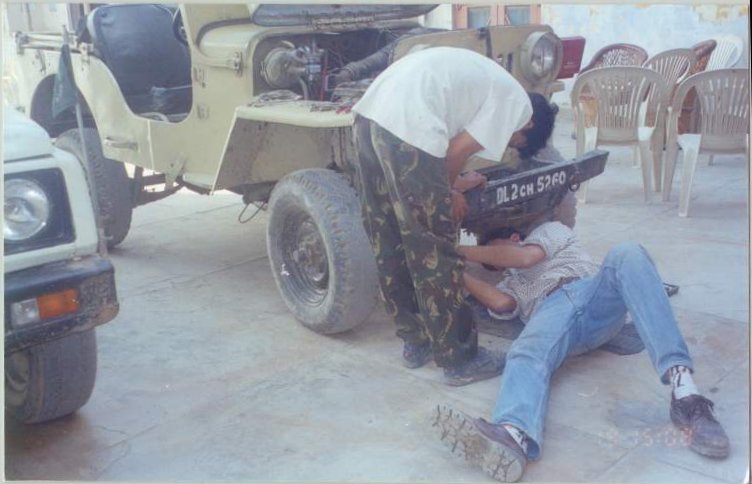I would have blogged about this earlier, but having been unwell for the last couple of weeks, just didn’t feel up to sitting on the computer and writing. Well, lets get to it shall we.
As I had mentioned in an earlier post, I was out of town all of January, campaigning for my uncle’s re-election to the Haryana state legislative assembly. He was contesting on an Indian National Lok Dal (INLD) party ticket, and though I have little regard for the policies (or the lack thereof) of the INLD, it was a matter of family comes first – irrespective of the party! It was my uncle who was contesting and the entire extended family (me included) quickly rallied behind him.
Unfortunately we lost the election 🙁 But quite frankly the result came as no surprise; during the Parliamentary elections in 2004 the voters in Haryana had already given an indication of things to come; when, for the first time ever, the INLD could not even secure a single seat. It was a rout in 2004 and the results of the state elections in
2005 were expected to be little different. By the time the dust had settled, the Congress party was sitting pretty with an overwhelming 3/4ths majority in the Haryana State Legislative Assembly.
Political analysts (people who admittedly are much more qualified than I am to comment on this) have had differing takes on this unusual (Haryana voters are not known to give such one sided verdicts) result. Many have called it a clear rejection (by voters) of “Family” politics, a rejection of the Devi Lal-Chautala clan’s propensity towards dynastic politics.
Considering that the Congress party is hardly free of dynastic politics this analysis would seem a little simplistic. Even the Congress party president, Mrs. Sonia Gandhi’s sole claim to party leadership is that she is married into India’s political first family (the Nehru-Gandhi clan). Dynastic politics is not a major issue for the Indian voter; in fact it is not an issue at all, apart from maybe with some political analysts & champagne socialists.
Other analysts have more accurately pointed towards the Haryana voters’ consistent rejection of incumbents in favour of change. Historically in almost every election the voters in Haryana have voted for change. This has been attributed to the fact that Haryana is a prosperous state with a high literacy rate, which somehow seems to translate into very high expectations from the government, expectations which are never completely met, hence the voters’ propensity to vote against incumbents.
This anti-incumbency theory while explaining the Congress party’s win, does not completely explain the scale of their victory.
A look at the voting pattern in the state reveals that even though compared to the last elections the INLD lost only about 3% of its vote share, voters who had previously voted for other parties consolidated behind the Congress. The INLD did marginally loose votes from amongst its traditional vote bank of Jats but managed to increase its vote share amongst Punjabi voters, however voters belonging to other communities voted for the Congress in a big way. The Harijan / Dalit voters, who had been divided amongst the Congress and the Bahujan Samaj Party (BSP) last time, completely deserted the BSP and overwhelmingly voted for the Congress this time. Similarly the Congress increased its vote share amongst the Bhramins, Banias as well as other communities.
This consolidation of non-Jat votes against the INLD combined with the marginal increase of Jat votes in favour of the Congress seems to have done the trick.
The reason why I describe the vote as against the INLD as opposed to in favour of the Congress is simply because that’s how the voters seem to have felt. Voters rallied behind the Congress as an alternative to the INLD; the attractiveness of the Congress stemmed from the fact that they were the only party which seemed capable of defeating the INLD, so the majority of voters who were voting against the INLD decided to go with the Congress.
Through this entire analysis the question that remains unanswered though is the reason for the anti-INLD wave. Well, the voters quite simply seem to have been fed up with the centralisation of power in the hands of Mr. O.P Chautala & his two sons. Everything and I mean EVERYTHING required the blessings of either Mr. Chautala or his sons. This centralisation of power meant that other elected representatives could make NO decisions whatsoever, neither could civil servants.
Almost all the voters I spoke with readily agreed that the INLD under Mr. Chautala had done more development work for the state than any previous administration, BUT and this is a big “but” all the works to be carried out were decided directly by the Chautala clan. This meant that more often than not local priorities were not considered – priorities that could have easily been made clear if the local elected representatives had been consulted. Voters complained that often work which benefited relatively fewer people was cleared, while other activities which could have positively affected a far greater number were not considered at all.
Voters were willing to overlook even this lopsided development work; after all much more development work was done by this administration than any other. In fact in all pre-election and post-election polls conducted by research agencies Mr. Chautala ranked as the overwhelming first choice of voters as the most able Chief Ministerial candidate.
What they were NOT willing to forgive was the imperial attitude of the Chautala clan. The sharpest reaction against the INLD seems to have come from the manner in which the Chautala clan ran the administration of the state, more like a fiefdom than a democratic state. This was something that was (rightly so) simply beyond the tolerance of voters.
It seems that power simply went to their (the Chautala clans’) head. Such arrogance & blatant misuse of power might be the norm in banana republics but the Chautala clan will do well to remember that such behaviour is political suicide in a staunchly democratic nation like India. The voters seem to have been driven by a desire to teach Mr. Chautala a lesson, a lesson he would be well advised not to forget in a hurry.
The citizens of the state of Haryana have spoken.




